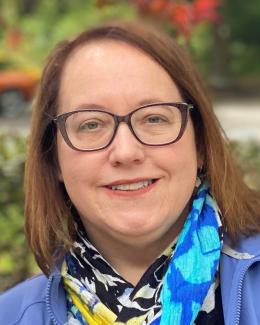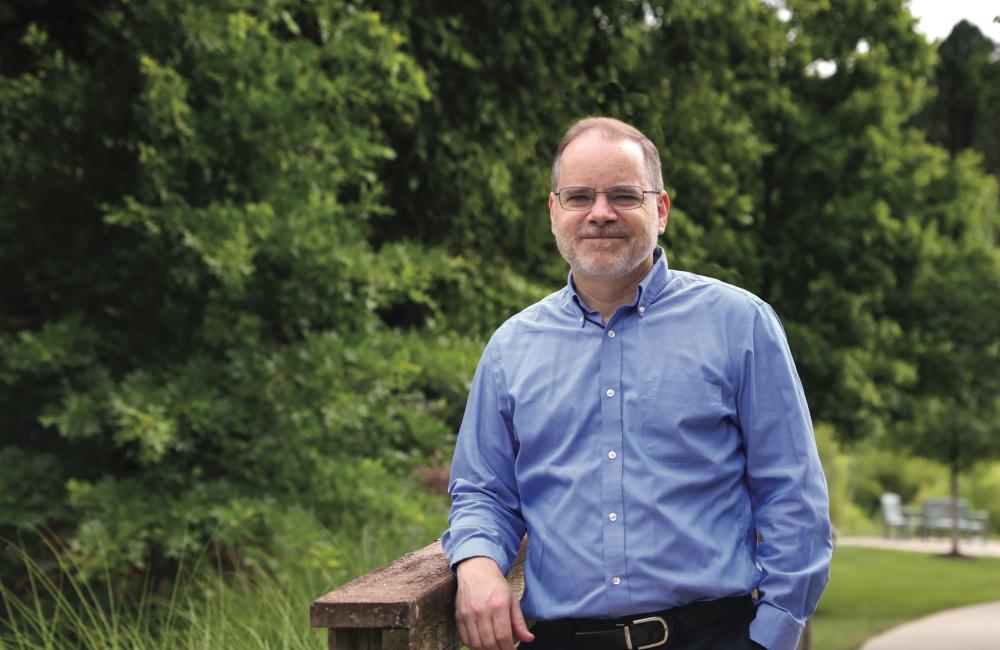David Sholl leads the Transformational Decarbonization Initiative. Image credit: Genevieve Martin, ORNL
David Sholl joined ORNL as director of the Transformational Decarbonization Initiative in July 2021. He is working to elevate the lab’s decarbonization science and technology, including carbon capture, conversion and storage.
Sholl holds a joint appointment with the School of Chemical and Biomolecular Engineering at Georgia Tech. He is a fellow of the American Association for the Advancement of Science and the American Institute of Chemical Engineers. Sholl earned his Ph.D. and master’s degree in applied mathematics from the University of Colorado, and a bachelor’s in theoretical physics from The Australian National University.
What are the goals of the TDI?
The Transformational Decarbonization Initiative at ORNL is focusing its efforts in three areas. One of these is focused solutions for sectors of the economy that will be difficult to decarbonize. A good example is off-road and heavy-duty transportation such as aviation, large ships, farm equipment and long-haul trucks. These applications are hard to electrify due to space and weight considerations. Even with increased use of bio-based fuels, this sector will have significant CO2 emissions for a very long time. We are working on carbon-negative technologies such as capturing CO2 directly from air that will be needed to get to a truly net-zero emissions economy.
Second, we are funding projects at the lab to convert CO2 into useful products, anticipating very large quantities of captured CO2 in the future. If we are hugely successful in CO2 mitigation, we will be generating perhaps a billion tons a year of it in the United States, about the same size as the U.S. petrochemicals industry today. We know scientifically how to do all of these things. The challenge is to develop solutions that are affordable and work at very large scales.
A third area we’re looking at is the global impact of capturing CO2. We want to better understand the potential impacts on natural carbon sinks such as oceans and soils and the general effect on plants in our biosphere as we achieve CO2 capture. We will be using very large, very sophisticated computer models to understand those feedbacks and to better predict impact on the future climate.
How does TDI fit into DOE’s Energy Earthshots initiative?
DOE’s Energy Earthshots are an all-hands approach for science and technology to meet the nation’s climate and economic competitiveness goals. We take a similar approach here at ORNL. The breadth of our interdisciplinary expertise and capabilities means we can tackle the full range of technologies needed to address the climate challenge.
TDI is strongly aligned with DOE’s Carbon Negative Earthshot. For example, we’re not just looking at directly capturing CO2; we’re also looking at understanding carbon stored in soil. How do you even accurately detect and measure soil carbon? It varies from location to location. How long will that carbon stay in the soil given the very complicated interactions between the soil microbiome and the plants growing in it? Then there are things we can do in terms of trying to optimize our bioenergy crops. To me, this is a great example of how the interdisciplinary environment at Oak Ridge can help people develop big ideas and create the teams to make them a reality.
The climate challenge is enormous. Can we make a difference?
I believe so, yes. Anything that will be relevant to climate change mitigation must be implemented at a gigantic scale. To me, the implication of this is that no individual person can solve the problem. You need expertise from many, many fields. You need scientific expertise and engineering expertise and people who can think about life cycle analysis. You need people who can think about the economics and the equity issues associated with these very large-scale technologies. And you need to be able to connect with outside partners and industry. All this is something that we are very well suited to at the lab, and where we have a proven track record.
The challenge is so large that there will need to be many solutions. A colleague described it well recently when they said there is no silver bullet, but we can aim for silver buckshot.



